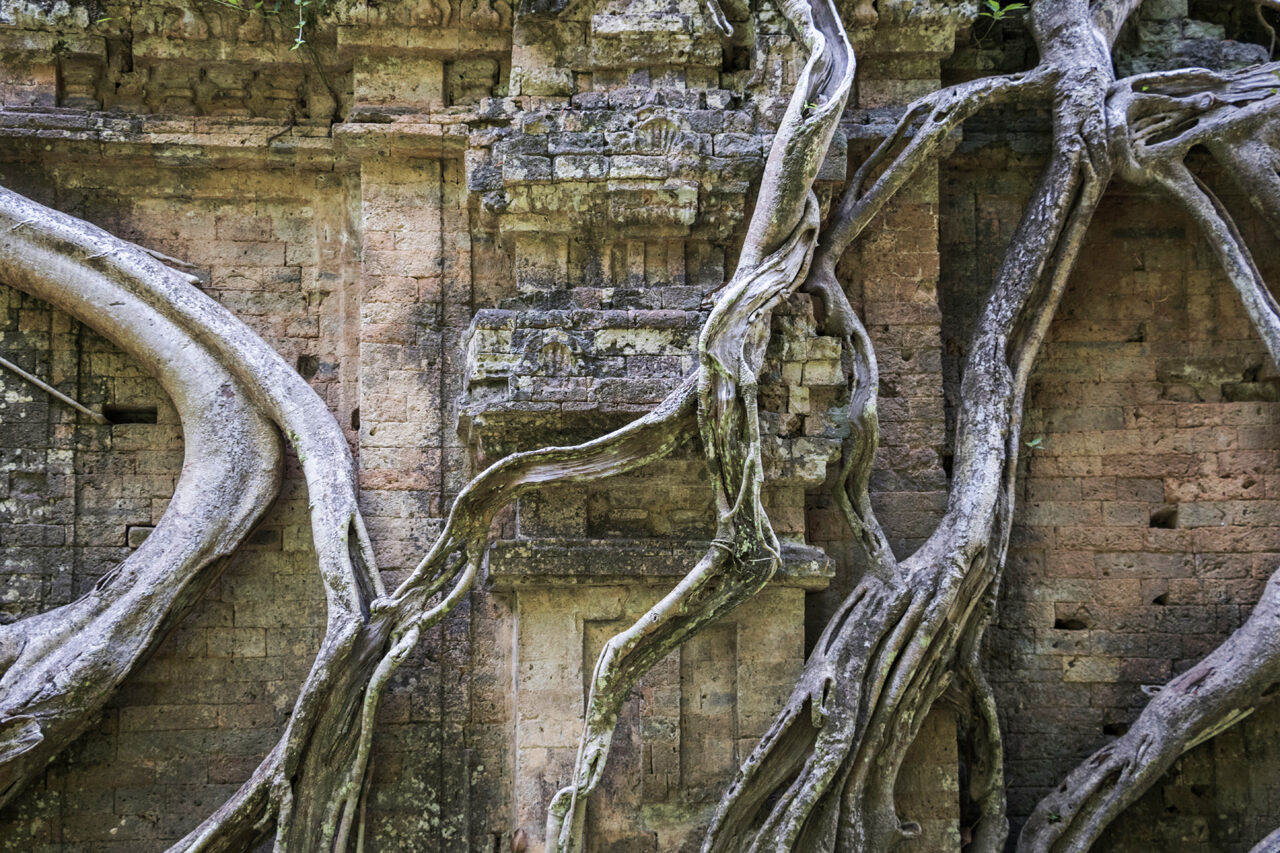When I arrived in Phnom Penh during Cambodia’s dry season in January, I stumbled through the streets in a jet-lagged daze, barely seeing the dense city around me. My mind was on thousand-year-old Khmer temples, their golden facades crumbling into worn stone blocks and imprisoned by thickly braided tree roots.
These structures, from the Khmer Empire’s capital at Angkor, have been synonymous with the myth of lost cities for at least two centuries. You can even find Lara Croft exploring the legendary ruins of the Angkorian temple Ta Prohm in the first Tomb Raider movie. But unlike Roman civilization, Khmer traditions are not lost or dead. The culture that blossomed at Angkor—a form of Theravada Buddhism combined with centralized state power—continues to shape many aspects of Cambodian life today.
Once I’d gotten some sleep, I could see it on the streets of Phnom Penh, the city where Khmer royals fled in the 15th century as Angkor fell apart. Today, the nearly 600-year-old capital’s buildings are obscured by tangles of electrical cables instead of tree roots, and fences around modern-day palaces are topped with coiled razor wire so fine it shimmers in the sun like jewels.
In full: https://www.atlasobscura.com/articles/ancient-cambodian-megacities
